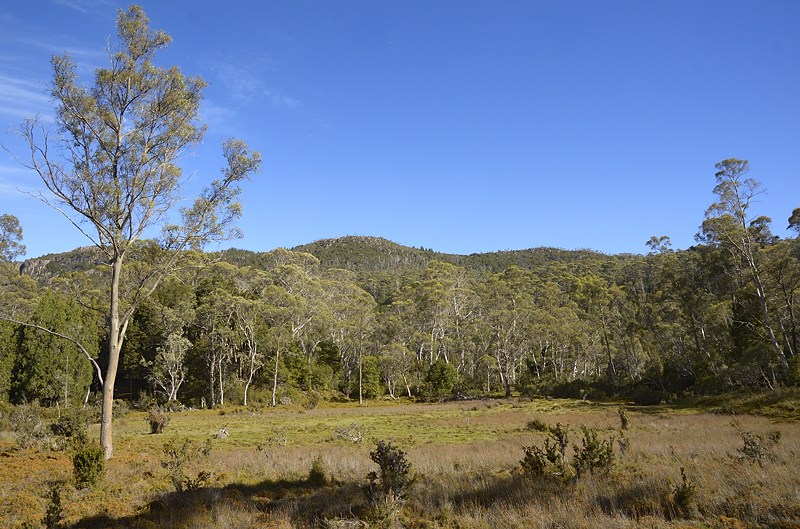 |
| Copyright Google 2013 - detail from Google maps - See if you can find the Savage River Mine from space... |
Can you see the Savage River Mine? Probably not in this shot without help, but in fact, yes you can. Most of the other blots on the landscape are clouds, but the one shown below is in fact the Savage River mine.
 |
| See, you CAN see the Savage River Mine from space, easy! |
Here it is in somewhat close-up.
 |
| Savage River Mine |
I really hope they don't want to do this to the whole Tarkine. This mine is already there, sure. But it's not inconsequential. I don't mind a small mine, especially when they're mining really expensive stuff, like gold, and diamonds, platinum, weird rare-earths that are absolutely necessary to speed up the NBN.... No, these are mainly going to be cheapo strip mines, taking out easy "surface"* iron ore. I suspect they are incompetent fools, who will damage our environment and then nick off, leaving us with their debts, mess and damaged people. Meanwhile we, and many small businesses, will have invested heavily based on the stupid promises of people like Brenton Best and Bry-Bry the Halfwit. Oh yes, and the so-called liberal party.
They claim they just want to carve off small bits. Let's understand, they are mainly mining iron ore. This is a very cheap metal. It is at historically astronomic prices, because China wants a lot of it. The Chinese have been over-estimating their economic activity for reasons related to the structure of their political system. (Yes, it's not quite at Hare-Clark standards.) They have also been recently a little spooked by their inability to breathe underneath the smog produced by their rapidly-expanding industry. When they work all this out and the mines close, we will (as usual):
- have some more toxic holes in the ground that have to be fenced off so nobody intelligent can see them;
- have paid someone to take away some more of our resources;
- be left with unemployed miners; (Actually, most of the employees will have moved here from interstate, and they will just leave and go to work somewhere hotter. If someone from the NW Coast would like to dispute this, please feel free to try to get your local unemployed taken on in any of these mines. Most of them won't go and work there, and this will be proved by the unemployment rate on the NW Coast barely moving even if all these mines get up.)
- be left with the debts to the government that the now-defunct companies cannot afford;
- be trying to clean up forests, beaches and creeks that are full of the crap their inadequate anti-pollution arrangements allowed to escape;
- be able to see their failed mines from space; AND, bizarrely
- still be trying to attract rich, nature-focused tourists who are increasingly sceptical about our credentials as purveyors of nature and beauty.
Sure, let's make the most of some of our best mineral resources. However, I'm pretty sure the Tarkine isn't in this category. There, we will provide a few jobs for a few years, and be left with a damaged and abandoned wasteland. There MUST be a way to identify some really worthwhile mineral deposits AND to avoid any further damage to the large areas of rainforest and coastline that have become so well known and are starting to attract so much attention from overseas.























